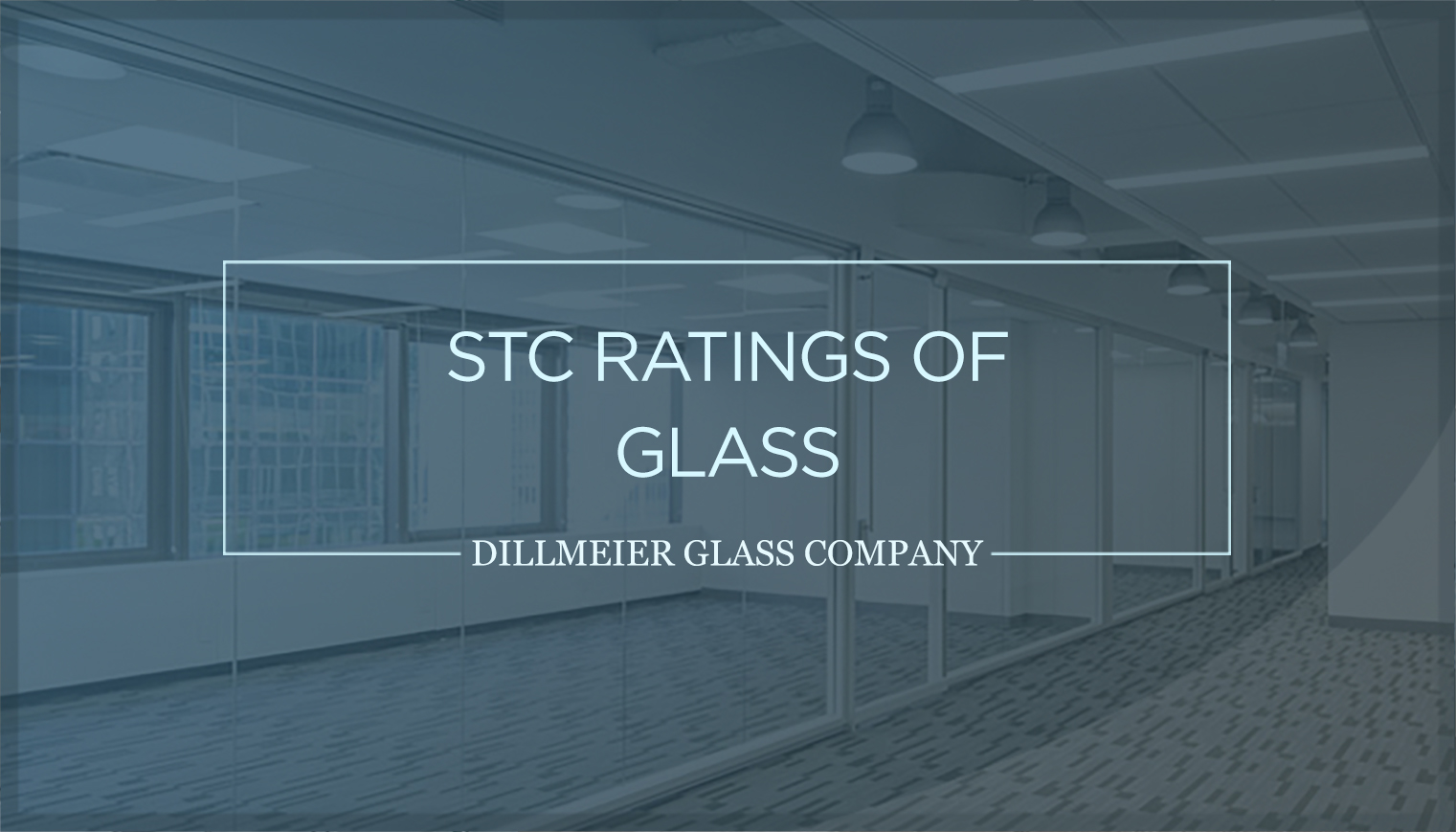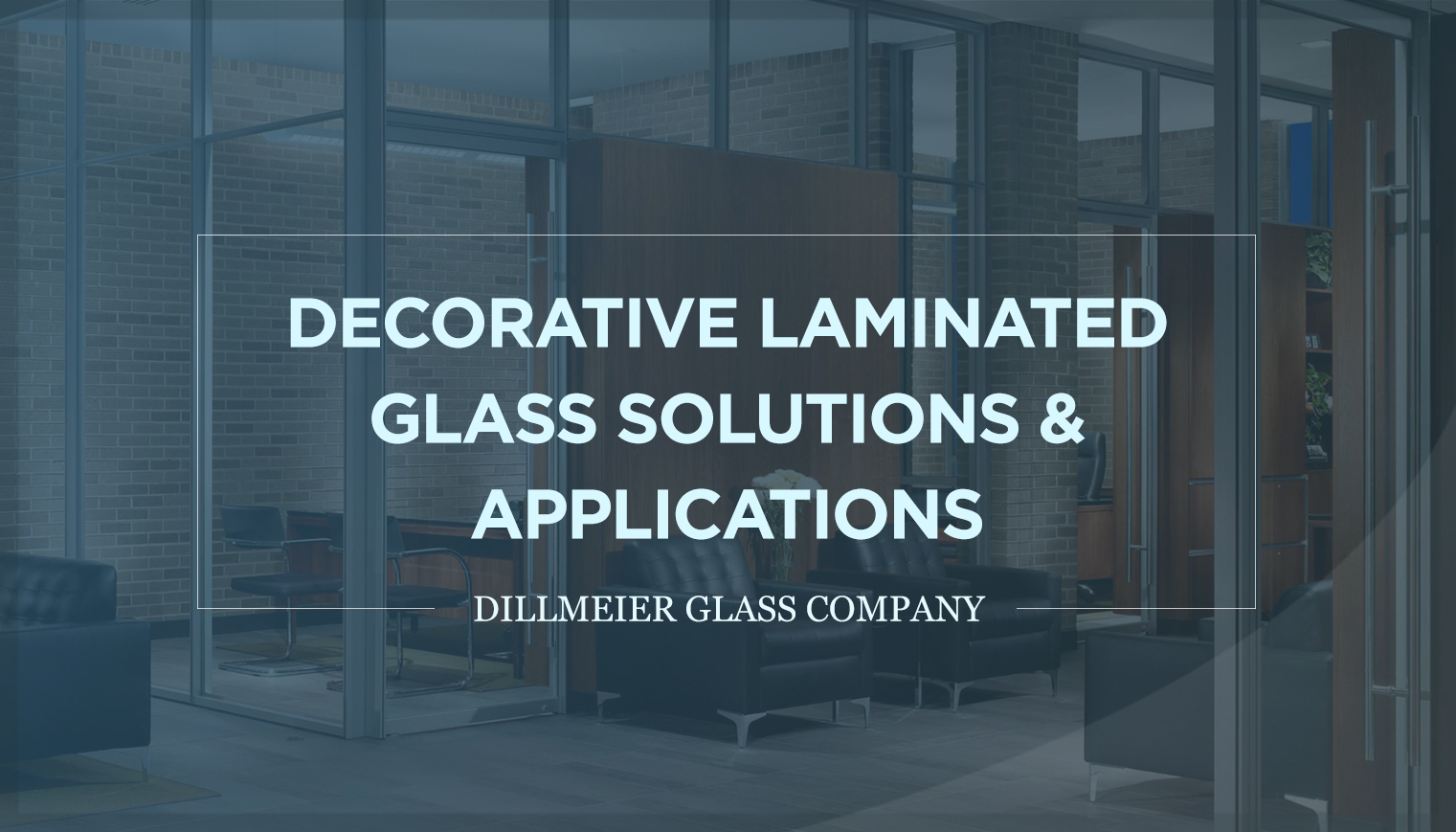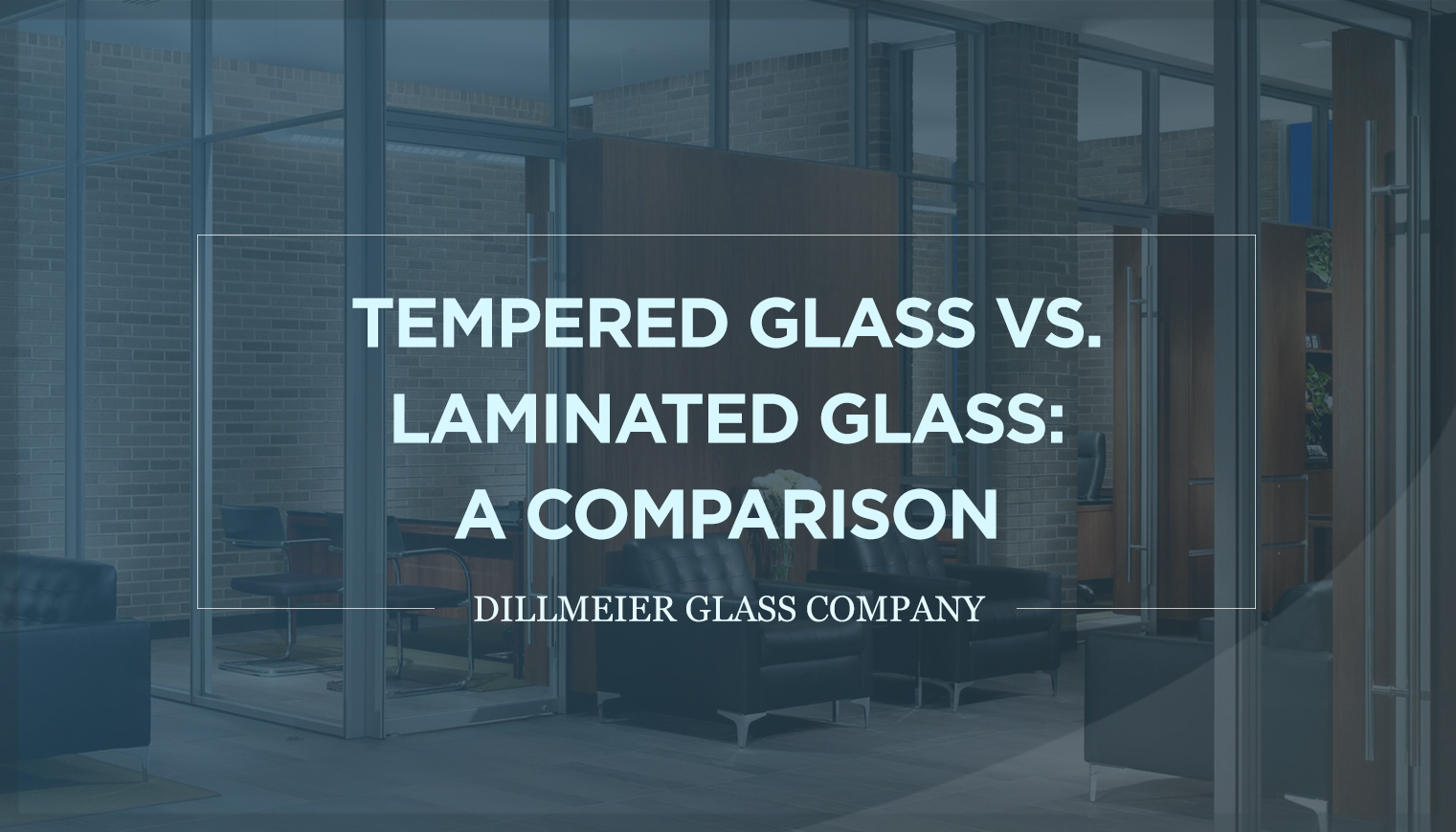STC Ratings of Glass

Editor’s Note: This blog post was originally published in February 2019 and has been revised to reflect industry updates.
Sound Transmission Class (STC) ratings for glass range from low to almost soundproof. While glass alone is simply a faint noise insulator, additional fabrication processes can be implemented to improve performance and noise reduction, such as lamination, double-glazing, or a combination of the two.
Decibel value (dB) levels and how much noise your glass can withstand is also a consideration. For higher noise levels, it’s best to implement laminated or double-paned glass for extra protection. Areas requiring less of a barrier can utilize standard monolithic or single-pane glass. Both are cost-effective and work well for most interior applications.
Several factors in determining the best type of glass for your project include insulation requirements, intended usage, acoustics, and other conditions.
Here is a useful outline of STC rating levels, types, requirements, and suitable strategies and applications to help you choose the perfect match.
What Are STC Ratings?
An STC label delineates how partitions and walls effectively block sound and reduce noise. Ratings are determined by broadcasting a specific auditory tone near the material, and measuring dB on both sides. The higher the STC value, the better its insulation.
Rankings are then calculated using a non-combined logarithmic formula. For example, while a single 1/4-inch piece of glass achieves an STC rating of 31, doubling up with two 1/4-inch pieces does not double the rating to 62; instead, it only increases to 36 STC. This demonstrates that while additional layers do enhance sound insulation, the improvement in STC rating is not directly proportional to the number of layers added.

STC Requirements & Acoustical Factors
Important factors in determining the ideal glass for your application include sound location, room type and acoustics, dB levels, and intended usage. Glass sound reduction properties vary.
Consider the following:
- Which glazing type offers the best noise reduction?
- Choose a thicker cut when using monolithic glass.
- Laminated glass is best for increased thickness levels. This applies to individual glass lites, or laminated for one or both lites.
- There are many available insulated glass options, such as thickness ranges, air spaces, gas fills, spacers, and sealants.
- Examine framing and sealants, which can also contribute to overall acoustics.
What STC Rating Do I Need for Glass?
It’s prudent to determine required noise cancellation levels prior to purchasing any building materials. This involves some thought, and is more complex than simply stating: “35 STC is ideal for all offices, and partitions to match.”
Standard construction practices typically leave gaps letting noise bypass even the most insulated walls. Soundwaves follow the path of least resistance, and can travel through HVAC vents, up through ceilings and over walls, and even electrical outlets.
Glass walls comprising 50 STC-rated materials can drop into the mid-30s via acoustic flanking—even through the smallest cracks. Several options and upgrades to eliminate this noise include adding a layer of drywall, filling gaps with acoustic sealant, and upgrading doors. There’s also a special ambient system known as sound masking, designed to block noise throughout office areas.
Other options include upgraded glass panes known as lites. While these offer another alternative, they are higher in cost and aren’t effective unless other areas are tightly sealed.
The following are several strategies and respective applications to help improve the noise insulation of a glass partition. Remember: High STC panes aren’t always necessary in some instances.
While glass alone is merely a faint noise insulator, methods such as lamination or double-glazing can significantly improve performance and noise reduction.
Monolithic Glass
Produced through the float glass manufacturing process, this single lite offers versatility for various applications and can incorporate decorative enhancements. Monolithic glass boasts a typical STC ranging from 31 for 1/4-inch thickness to 36 for thicker variants.
Standard Glass
A single lite has an STC rating ranging from high-20s to mid-30s, with its score increasing as glass thickens. Standard walls in most homes are 33 STC, while studio-level soundproofing requires a rating of at least 45. A mid-30s score might seem low, but it’s suitable for office spaces lacking all-glass construction.
Laminated Glass
Laminated glass can increase an STC rating when cost and thermal insulation aren’t concerns. Created by sandwiching various interlayers in between two glass lites, this special adhesive adds strength and blocks soundwaves. Laminated glass will also stay in place, even if a significant impact should occur. This is similarly utilized to create windshields and other extra-strength, durable glass.
With some laminated panes’ STC ratings reaching as high as 40 or more, the exact ranking depends on the glass and adhesive thickness.
Double-Glazed Glass
Double-glazed, or double-pane glass features two lites in a frame with a layer of air in between. This setup is often used for thermal efficiency in homes, but isn’t necessary for interior rooms. Due to its higher insulating properties, other gasses such as argon are sometimes substituted for air.
The gap between lites also provides acoustic insulation to improve STC ratings. Heat efficiency usually requires a maximum gap of 16 millimeters, but a larger space is always better for soundproofing.
Double-glazed glass can also provide an STC rating of up to 40. Costing more than other materials, this is used mainly for exterior applications.
Laminated & Double-Glaze Combinations
Laminated and double-glazed glass both hold STC ratings of 40, but anything higher typically requires a combination of the two. Maximum noise insulation is achieved by laminating one or more lites in a double-pane piece.
Most glass advertised as soundproof consists of this combination for maximum noise cancellation, with STCs of 45 to 50, or higher. This glass type isn’t necessary unless your application requires the highest soundproofing levels, such as a professional recording studio.
Single-Pane Glass
To achieve quieter office areas, ensure all gaps are filled out during construction, and install high-quality doors and drywall. With these improvements, single-pane glass is the best for the majority of interior applications.
If your budget permits, consider lamination a first choice to increase a pane’s STC rating.
How to Find the Best Solution for Soundproofing
Here are some best practices to consider when identifying the best noise reducing glass for your projects:
Understand Your Project Requirements
Begin by understanding the specific noise control requirements of the project. Consider factors such as the building's location, surrounding environment, intended use of the space, and desired level of acoustic comfort.
Consider Glass Thickness & Configuration
Thicker glass typically offers better sound insulation than thinner glass. Evaluate the impact of glass thickness, laminated layers, and airspace configurations on STC ratings. Choose a glass configuration that balances acoustic performance with structural requirements and design preferences.
Implement Appropriate Framing Systems
Pay attention to the framing systems used to support the glass panels, as they can affect overall sound transmission. Opt for framing systems with good sealing properties and minimal sound transmission paths to enhance the effectiveness of the glass in controlling noise.
Address Flanking Paths
Identify and address potential flanking paths or alternate routes through which sound can travel, such as gaps around windows, doors, and penetrations in the building envelope. Proper sealing and insulation measures can help minimize sound leakage and improve overall acoustic performance.
Integrate Supplementary Sound Control Measures
In addition to selecting glass with ideal STC ratings, consider integrating supplementary sound control measures such as acoustic seals, sound-absorbing materials, and sound masking systems where necessary to further enhance noise reduction capabilities.
Consult with Experts
Collaborating with glass manufacturers and professionals can provide valuable insights and recommendations for selecting glass with appropriate STC ratings to meet your project's objectives.
Choosing the best glass type for soundproofing is dependent on several factors—all of which should be considered during project planning. While laminated, double-glazed, and other combinations are suitable choices, the decision is based on room type, acoustics, application, area of use, and more.
When it comes to achieving optimal soundproofing levels and selecting the right glass types for whatever your applications, collaborating with an experienced fabricator like Dillmeier Glass Company is essential. We offer invaluable expertise and guidance throughout the selection and installation process.
Contact Dillmeier Glass Company for questions about STC ratings. We’ll help you find the perfect solution for your project!



